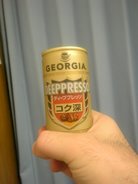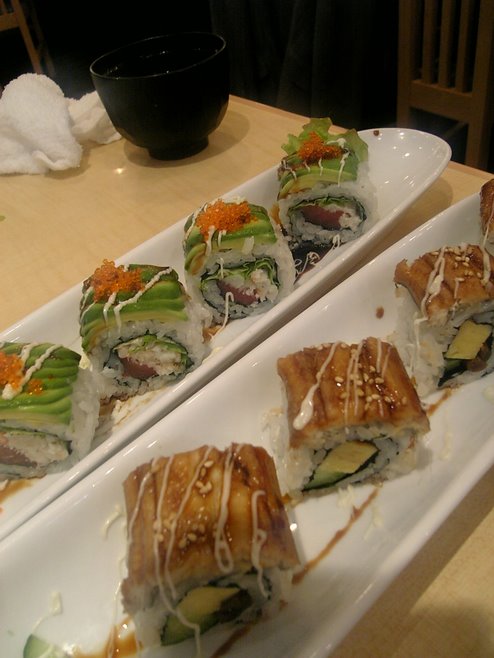Well known fact #1: Kyoto has a fair number of temples.
The Truth Behind it: Yep, this one is true. There are about 321089293 temples in this town, or at least it seems that way. There is no way that one can visit any significant portion of the cultural treasures that this city holds. Of course, one can certainly visit a good number of the famous ones, and therefore have enough experience to make snap judgements on the entire city.
So, without further ado, I’m proud to present FAMOUS TEMPLE SNAP JUDGEMENT # 1: Kinkakuji.
Kinkaku-ji is actually part of a large Buddhist temple complex, known as Rokuon-ji.

It's easy to find, as there is very massive kanji on the hill nearby.

This large character means ... "large". Very straightforward.
Before we get into the temple and what makes it so fancy, perhaps a quick TSI refresher in Buddhism is in order. Buddhists teach that life is suffering, and that one should turn inward to seek spiritual enlightenment, rejecting immoral behavior and following a sacred path. Buddhists believe that following the path helps them resist the source of suffering, which is desire – including lust, greed, envy and all that other fun stuff. As with most major religions, the the sacred path includes some of the usual “no-nos”: No Killing, No Lying, No Copious Humping Of Russian Prostitutes. Some Buddhists have other unique rules: No Sleeping On Giant Comfy Beds, and the Gremlin-esque*, No Eating After Noon.
Ok! Now that we are all up to Buddhic speed, we can get back to the TSI investigation.
You see, Kinkakuji is interesting, given its current status as a Buddhist temple. Once upon a time, back in 1397, the Shogun decided to visit the area. Someone decided that perhaps they wanted to help the Shogun see that the riches of the material world are only skin deep, or maybe they wanted to distract him from all of the sorrow in the world, or maybe they just wanted him to make their local temple a major part of his Shogun-circuit, but they decided to outfit one of the pavilions in a very unique manner.
Pure Gold.

Kinkakuji or “金閣寺” translates as “Temple of the Golden Pavillion” – which is pretty much spot on, as you can see.
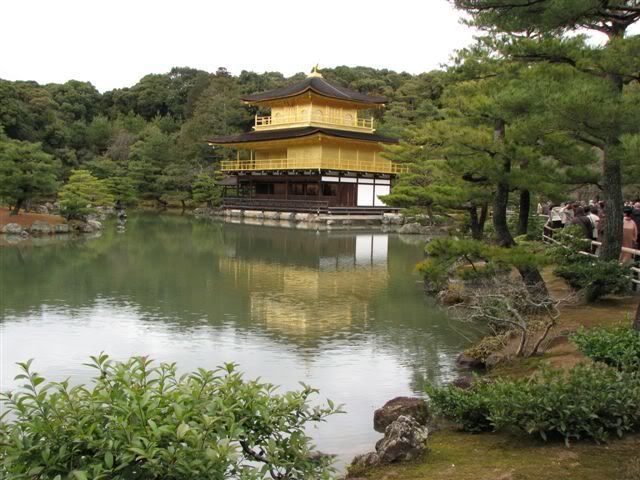
It's really pretty.
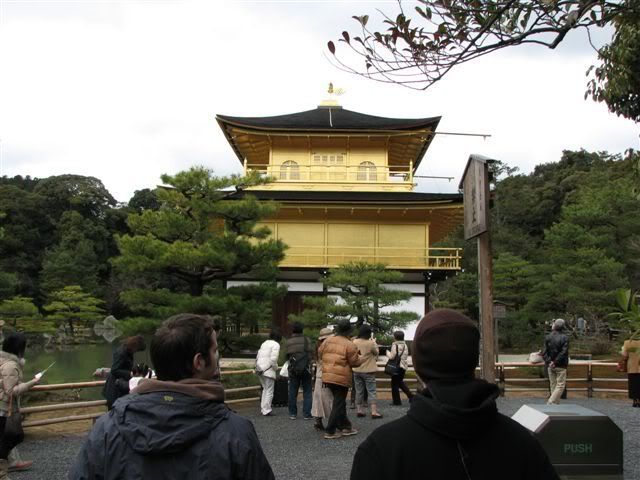
Some years later, someone thought that a building covered in gold jived really well with the Buddhist persuit for personal fulfillment. I totally see the connection, don't you?
Buddhist A: Forget the desires of the ouside world!
Buddhist B: Woah! Check out that gold building! It's purty!
Buddhist A: WOW! THAT'S AMAZING!!!!
Buddhist B: What were we doing again?
I’m sure I'm not alone in seeing the wonderful irony that exists when a group focused on ignoring the desires of the outside world has an entire building that was blinged* up to impress a visiting dignitary. That’s serious comedy.
Of course, Buddhists are hardly the only religion that seems to have done something counter-intuitive to the basic precepts. Buddhists have made a vast contribution to enriching the art and culture of the entire world. Don’t let the TSI team take anything away from their work. After all….I don’t
really want to get into listing examples of major world religions whose followers’ actions don’t jive with their teachings.
Mind you, MerryManMakingIllInformedAndIllResearchedSocioCulturalReligiousStereotypicalJudgments doesn’t have the same ring as the current title, does it? So I'll keep the jokes-at-the-expense-of-monks to a minimum.
Mostly.
Anyway, where were we?
Ah, yes. Ancient Temple. Covered in Gold. Right. GOLD.
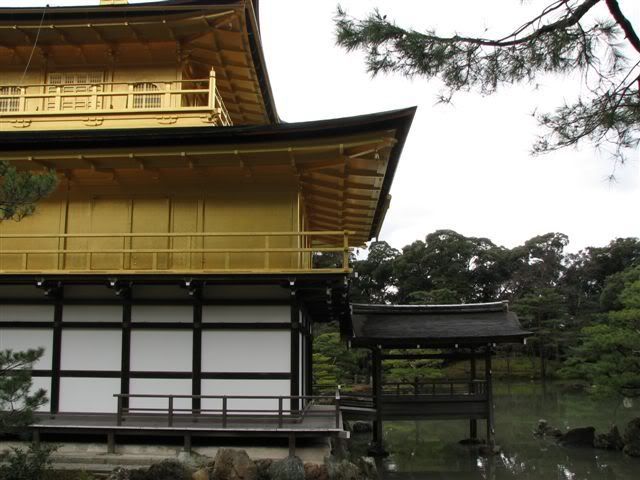
Er… did I say ancient? Well… about that…
If you happen to run over to the official website run by the tech-savvy monks that run the temple that runs this temple. (got that?), you might notice that there is an interesting gap in the history of the temple. They stop at about 1917.
Why might that be?
Well, this is hardly something that the temple folk like to publicize, as it might not be the best sales pitch for attracting potential visitors. You see, their definition of “ancient” is a bit flexible.
Let’s set the way-back machine to... oh... 1950.
Back then, there was a crazed monk. Now, we can surmise that this crazed monk didn't appear to be crazed at the time. In fact, he was likely quite popular among the local monk-dom (and the monkettes? Platonically, of course, as monks are celibate I think.... unless they are allowed to date within carefully proscribed monk-ey boundaries? Ah, I digress....) Monks tend to have a fair bit of time on their hands. Each monk is expected to dedicate themselves to some pursuit or other. This monk happened to choose the Temple of the Golden Pavilion as his dedication-thingey. And dedicate he did. In fact, he built up a healthy obsession to the point where he felt that the temple was controlling his life.
We all have various methods of dealing with stress. I personally feel that “reading a book”, “buying a model train set” or even “getting copiously drunk on cheap convenience store sake and calling random people in your cell phone” are good ways of dealing with stress - at least compared to what this fellow chose to do. (A healthy Facebook and/or MySpace addiction is also a semi-reasonable way to spend time, but sadly our anti-hero had the misfortune of being born long before our wired, enlightened times)
Anyway, our chap decided to do something a little more elemental to cope with his fixation on the temple.
He burned the five and a half century old struture to the ground.
Ta DA! Problem solved!
You see, this beautiful, ancient golden temple/tourist trap is actually a recent reconstruction. Although his fact made for several straight-to-video movies and a few comic books, it is not exactly published anywhere in the temple literature. Sneaky, sneaky monks.
Why might the monks keep such a major event in temple history (ie, the end of it) on the down-low? Well…. It comes down to economics. Temples are actually pretty sound business centres, which own fair amounts of property and are not ashamed to make a bit of coin here and there. You might even spot the odd BMW here and there, and some temples actually run large, fancy hotels (tune in soon for TSI: Temple Hotel).
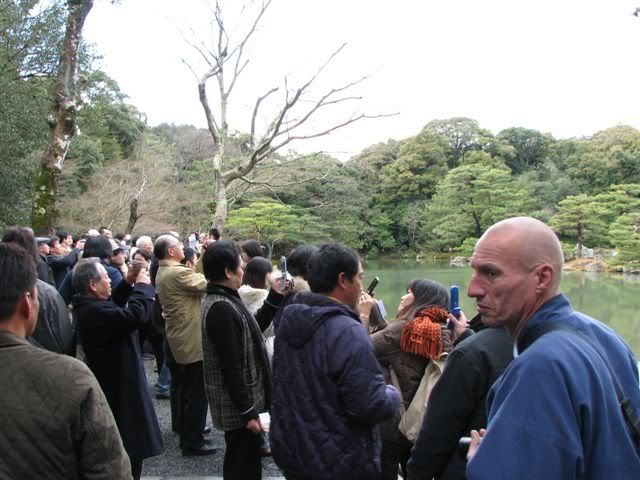
A major source of income for the monks is the asmission fees they charge tourists to come in and look around the temple grounds. This isn’t a huge amount of cash - anywhere from 300 yen to about 1000 yen per person - but it adds up. In fact, a nice temple on a busy train line can make some serious coin.
And when I say "serious coin", I mean that they are serious about collecting your coin.
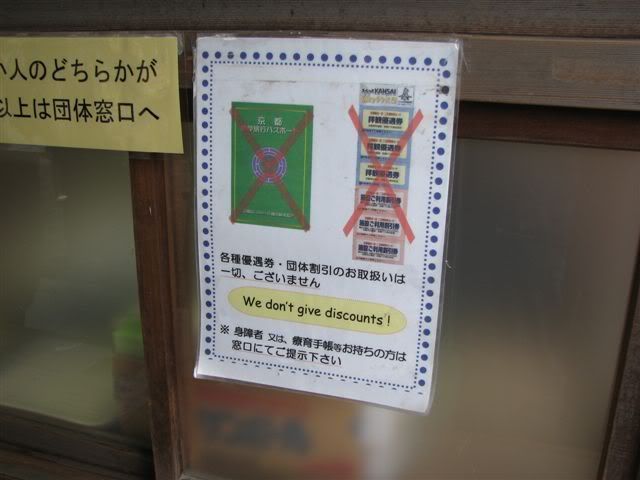
Can you really blame them? They have a temple that’s covered in freakin’ GOLD, and you can can bet that it brings in a huge amount of tourist money. Temples are expensive to maintain, so there's no problem with charging people admission to enjoy them. But.... what happens when your world-famous temple goes up in smoke? (sorry. had to be said). Well..no more tourist money.
But what to do? What to do?
Of course, rebuilt it!
Heck, why not improve things a bit?
Sure! During the reconstruction, they even extended the gold leaf over the entire building – an improvement, so to speak.
Problem solved. The hordes of tourists still show up in droves. The monks, of course, are sure to provide for your every tourist need.
You want fortunes? And you don't speak Japanese!
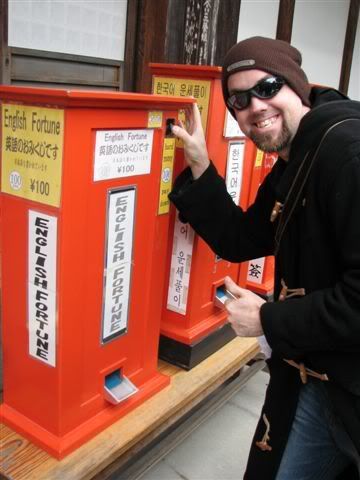
No problem!

Just be sure to have your hard money ready!
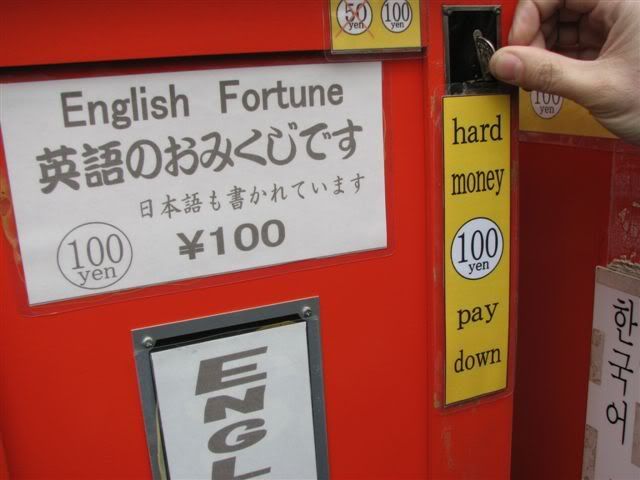
The fact that they forgot the word "earned" should NOT be taken as any sort of underhanded criticism of the monk-ey lifestyle. They pay down like everyone else.
Anyway, the whole "reconstrucing the burned temple" thing has, of course, spread a few seeds of doubt. In order to reassure people that the temple is not being reconstructed regularly with other gold-like materials, they have placed it under 24 hour internet surveillance.
If you want to check it out,
try this webcam:
Since Japan is in a different time zone, you can catch some fairly beautiful views during times when the temple is not normally open to the public. I checked it at around 5:00 EST, and got a pretty amazing sunrise. So have a peek, and remember: The “Click here to have a deranged monk burn down the Temple” button has been disabled in both IE and Firefox.
Welcome back. Sure is pretty, isn’t it?
In a way, it’s somewhat of a metaphor for Japanese society. The reconstruction hasn’t really made a difference to most of the tourists coming. It’s still a stunning structure, and one of the most beautiful places I have ever been. I highly recommend the trip if you happen to be in the neighbourhood. Fittingly, the top of the roof has a phoenix mounted on it.

Out of the flames, the Temple of the Golden Pavilion rose from ashes, to once more become a beautiful, fascinating place.
Japan is much the same. It has risen from challenges and destruction over much of its history. The way things appear to be is of vital importance. Harmony is to be preserved at all times, and if things appear to be working, they are working.
Japan loves beauty in all things – people, relationships and places. This exterior judgement plays out in a hundred thousand ways each day – from Louis Vutton bag toting gals whose full time job is fashion to late-working, nine-coffee-break-taking salary men, appearances are to be maintained at all times.
Somehow, for a building like this, it doesn’t really matter. The building might be fifty years old – a cultural Disneyland, carefully manicured to a perfect theme park experience designed to bring in tourist dollars – but it does it really matter? Kinkaku-ji is breathtaking, photogenic and immeasurably memorable.
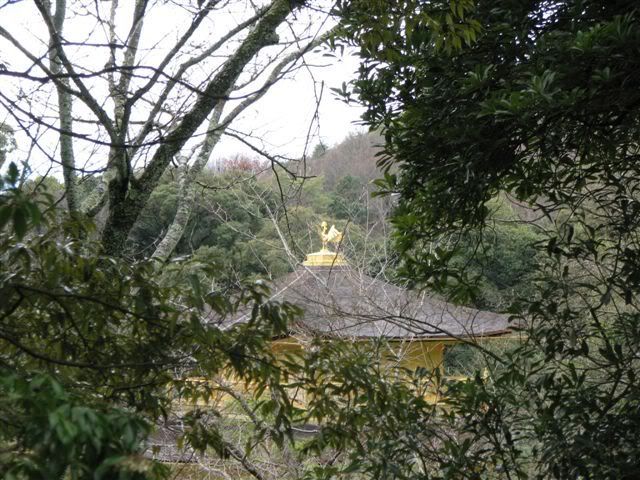
After all, if someone had the audacity to gold-plate a Motel 6, that would still be worth the trip. This place at least has the courtesy to look like it deserves the attention.

The Monks have the right idea. Forget all about that little glitch in the perfect history of this perfect cultural treasure. Take it in, take pictures and let yourself sink into the majesty of what is surely a crown jewel in a town full of treasures.
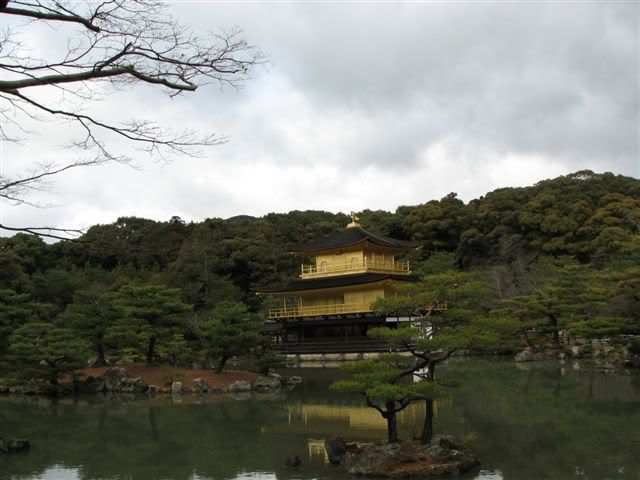
* Gremlinesque. “The Gremlins” was a famous movie about cute, cuddly creatures that turned into horrible monsters if you fed them after midnight. I suspect this is not true for most Buddhists.
* blings – to bling. Usually a noun, “bling” is a word from American hip-hop, which describes lots of expensive shiny things, like gold and diamonds.
* Japan is 13 hours ahead of EST right now, and 14 during daylight savings time.

.JPG)
.jpg)

.jpg)
.jpg)
.jpg)
.jpg)
.jpg)
.jpg)
.jpg)
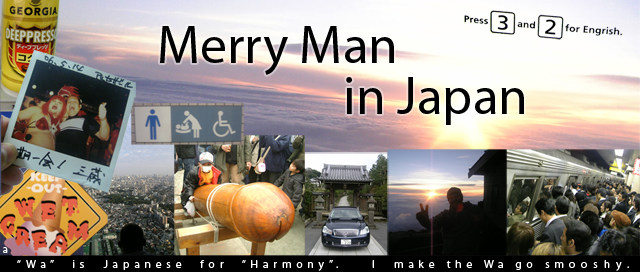

.jpg)
.JPG)

.jpg)
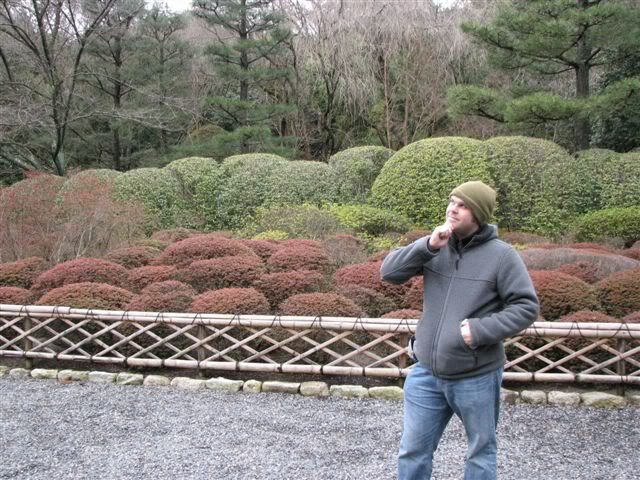
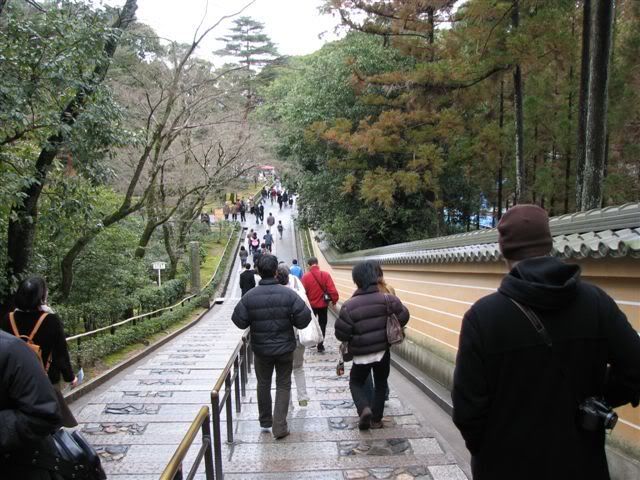

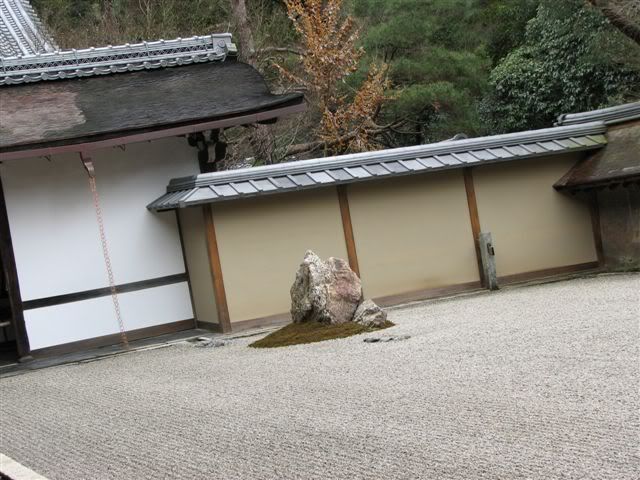

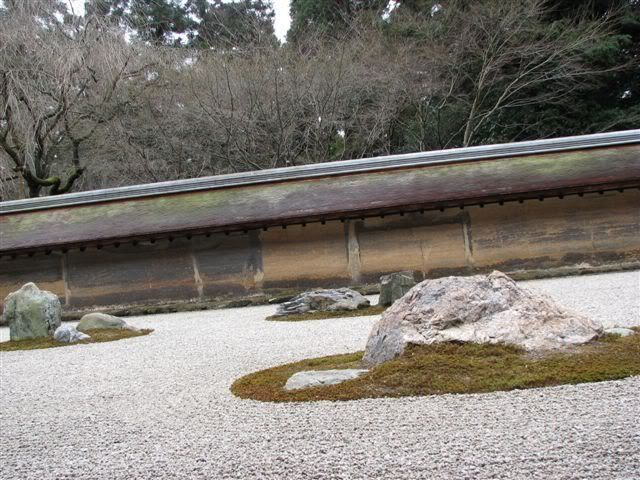

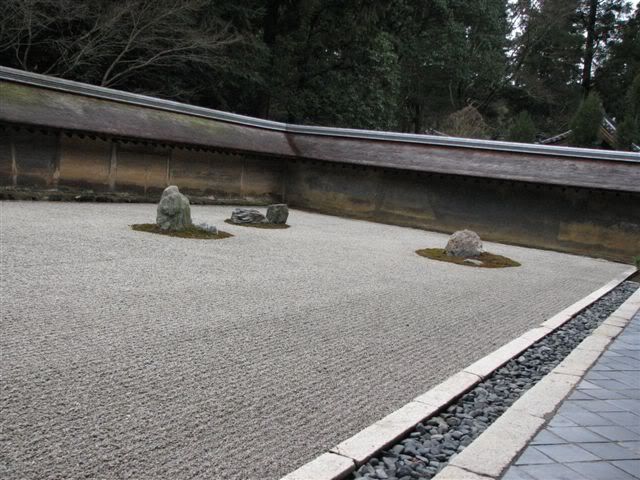
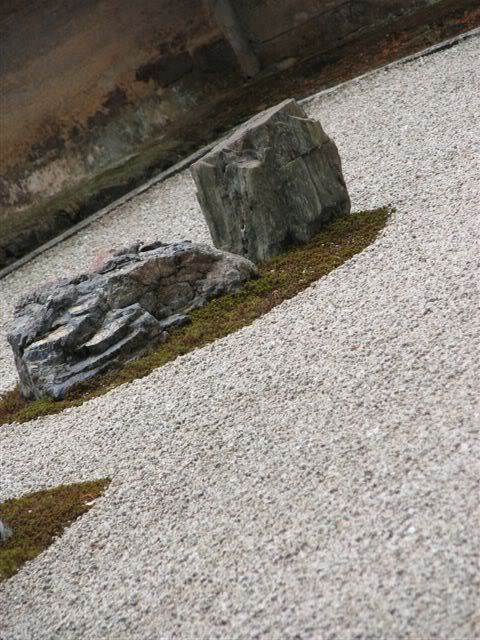
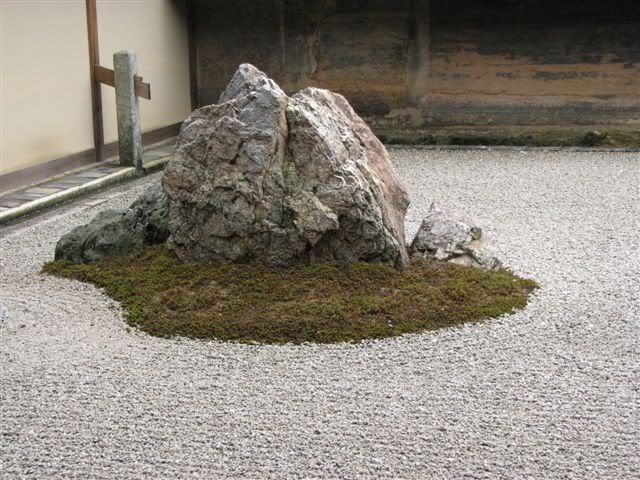
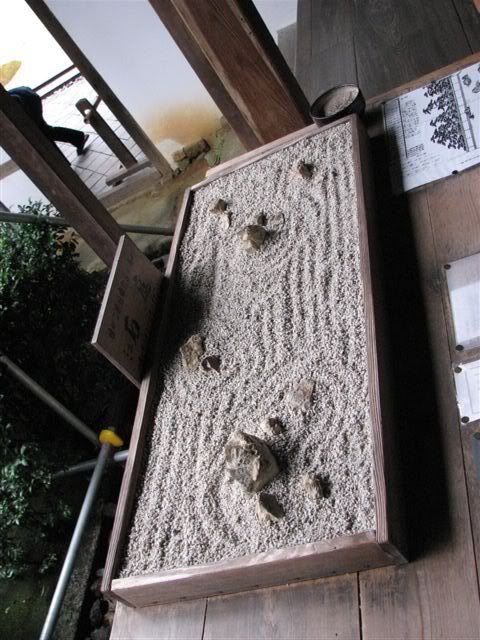
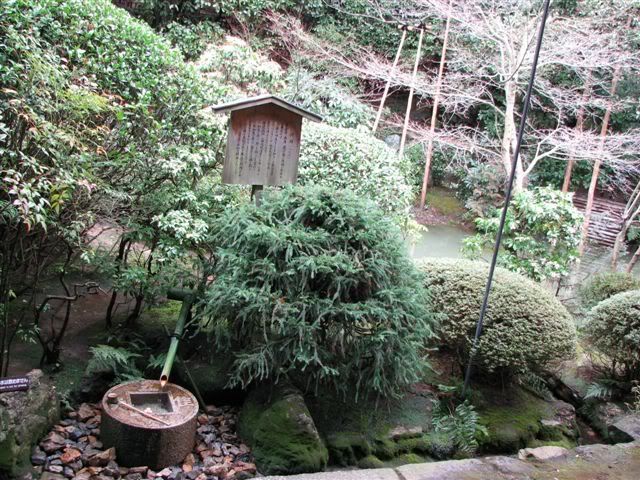
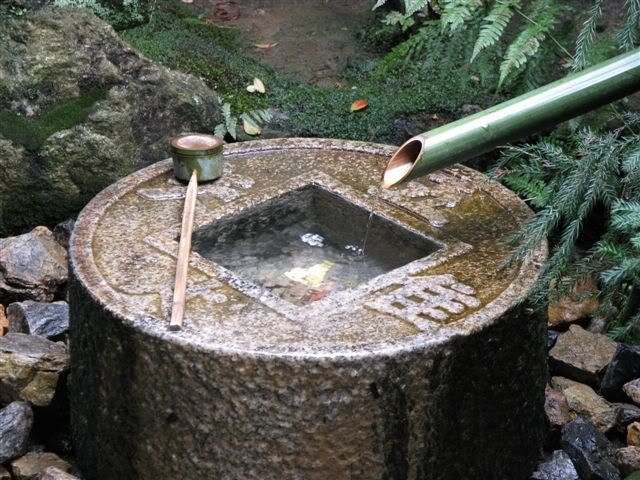
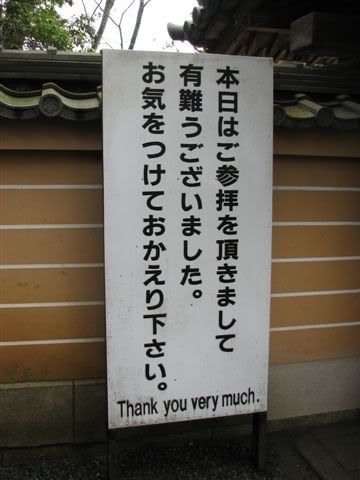

















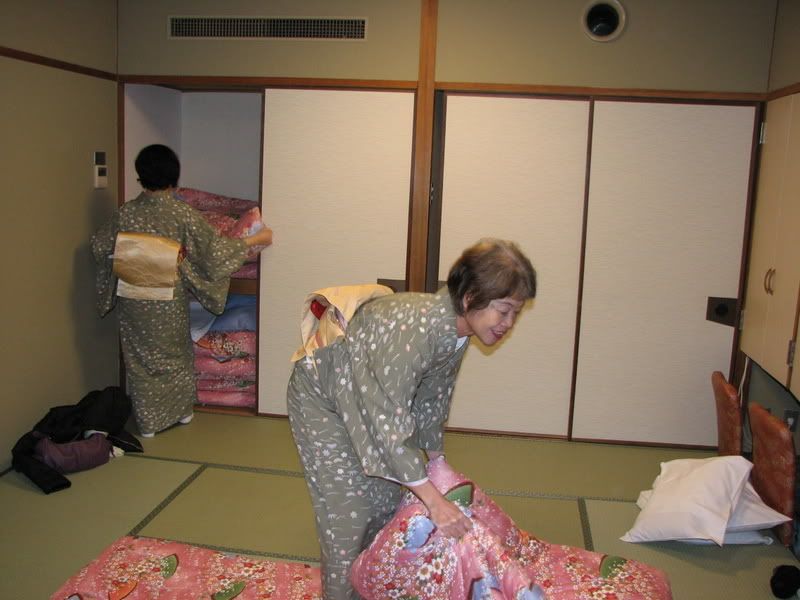

.JPG)
.JPG)



